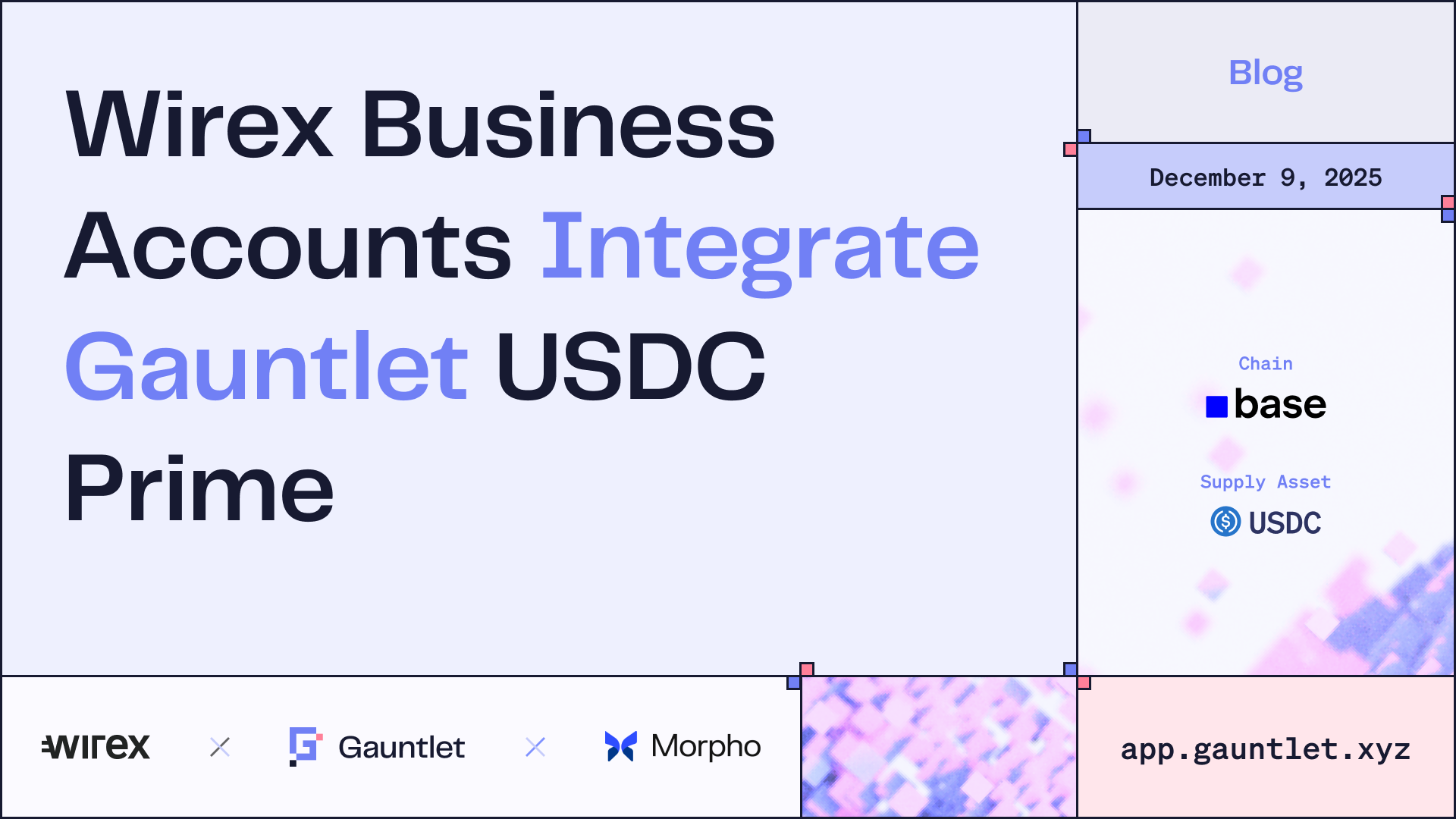Liquid Restaking Tokens, LRTs, built on EigenLayer have amassed significant value, and market events along with soaring TVL have clarified the need for a robust LRT risk framework. LRTs have spread quickly across DeFi on platforms like Pendle and Gearbox — just this year, billions of dollars have poured in, with overall LRT TVL climbing from $300M in January to over $10B in May.
In this blog, we provide a framework for evaluating LRT market risk, with a focus on four main risk attributes:
- External liquidity
- Withdrawals and the withdrawal queue
- LRT volatility
- DeFi risk
In the coming days, Gauntlet will launch a dashboard to provide data and visuals for users to apply our LRT risk framework on their own tokens.
External liquidity
Deep liquidity is paramount to preventing market-induced deviations from par, as long as redemptions function properly. While we generally monitor decentralized exchange (DEX) and centralized exchange (CEX) liquidity, DEX liquidity is more impactful, as evidenced by the LST liquidity landscape.
Using the stETH deviation from par as an example (see chart below), we observe that the downward spike in price (the green line) aligns with a jump in stETH liquidity (the red line). Although we had seen similar jumps in stETH liquidity that did not generate the same price movement, the risk increased as stETH liquidity outpaced wETH growth in the pool.
.png)
Ideally, a trade matching average daily volume (ADV) should not move the market more than 5%, even in a low-liquidity scenario. For lower risk, we should expect a reduction in liquidity to still be able to handle a trade matching ADV.
DEX liquidity concentration
While DEX liquidity depth is one dimension of liquidity health, liquidity concentration (the percentage of overall liquidity provided by an individual LP) adds some insight into how responsive the overall DEX liquidity is to a single LP’s exit. While concentration can be expressed with various metrics (e.g., Gini coefficient, norm ratio), the main goal is to reduce the expected variation in liquidity when changing the number of LPs. This helps smooth differences in liquidity as LPs enter and exit a given DEX market.
The visual below shows how Balancer Rocket Pool rETH liquidity concentration for the top three LPs has shifted over time. Over the last two years, the three largest LPs have generally made up 30% to 70% of liquidity, with a few spikes to 90%+. Concentration of the top three LPs has increased since July 2023, growing to ~70% today. This means that, as of today, the three largest liquidity providers for rETH on Balancer make up 70% of the total liquidity.
Note: rETH was not chosen because of its influence on EigenLayer as a collateral asset, but rather to provide an example of LP concentration that is not biased toward a single LRT.

Whale concentration
We also examine the concentration of a token’s largest holders to evaluate the potential impact on holding parity. When evaluating holder concentration risk, we can consider three scenarios:
- High Risk — largest LRT holder (excluding contracts) exiting in a single trade incurs more than 5% slippage
- Medium Risk — largest LRT holder can exit without incurring 5% slippage
- Low Risk — largest three LRT holders can exit at once without incurring 5% slippage
Withdrawals and the withdrawal queue
Enabling withdrawals gives token holders an alternative exit path and additional assurances for maintaining parity. Instant redemptions of LRTs into the underlying components (assets, staking rewards) can relieve stress during a drawdown. Holders should be aware that LRT withdrawals may still be subject to EigenLayer withdrawal queues. Nevertheless, some products (like rETH) allocate a portion of liquidity reserves to serving instant redemptions.
With regard to withdrawal queues, we perceive risk as follows:
- Highest Risk — no withdrawal queue
- High Risk — withdrawal queue exists, but no instant redemption reserves
- Moderate Risk — withdrawal queue can support instant redemption of 50% ADV
- Low Risk — withdrawal queue can support instant redemption of 100% ADV
LRT volatility
An asset’s historical inability to maintain parity will impact near-term parity viability. If an LRT has a more fragile parity, users will likely sell faster when it begins to deviate from par, exacerbating issues.
Given that market dynamics change quickly, we use a 90-day timeframe to evaluate historical parity performance and assess risk as follows:
- High Risk — consistently outside 0.99 / 1.01 of par over 90 days
- Moderate Risk — consistently within 0.99/1.01 of par over 90 days
- Low Risk — consistently within 0.995/1.005 of par over 90 days
We define consistently as a function of ETH 7-day and 90-day volatility: if ETH 7-day volatility is c* ETH 90-day volatility, then consistently would mean the price remains within that range for 90 - 3c days.
- For example, if the ETH 7-day volatility is 3x the ETH 90-day volatility, then ETH price would have to remain in range for at least 90 - 3*3 = 81 days.
- Likewise, if the ETH 7-day volatility is 1.5x the ETH 90-day volatility, then ETH price would have to remain in range for at least 90 - 3*1.5 = 85.5 days.
DeFi risk
Some dimensions of risk in DeFi are beyond an LRT’s control, so we include a broad category of exogenous DeFi risk as the final element in the LRT risk framework. While availability across DeFi makes LRTs more attractive, integrations with certain protocols can create sell pressure outside the control of the LRT and driven by other market forces. DeFi risk includes loans against LRT collateral and yield trading.
Loans against LRT collateral
When considering DeFi risk, loans against LRT collateral are often the first place we look for potential market impact. We already see existing lenders like Morpho, Compound, Gearbox, and Aave onboarding LRT collateral and new protocols like Ion building lenders dedicated to staked assets.
Given that these platforms are often used for looping right up against liquidation thresholds, small tremors in parity can quickly spark cascading liquidations that turn into massive market movements. Ideally, LRT exchange liquidity should be able to handle a trade of equal size to the amount of LRT liquidity being used as collateral across DeFi.
When looping LSTs, participants use an LST as collateral to borrow ETH, then use the borrowed ETH to buy more of the LST, which is ultimately deposited as additional collateral. This allows loopers to lever-up on the spread between LST yield and the ETH borrow rate. To maximize the leverage on the spread, loopers will often borrow as much as possible, which puts them right up against their liquidation threshold. Given the amount of collateral near liquidation, when deviations from par happen, the liquidations create additional sell pressure that often intensifies the deviation from par and results in cascading liquidations.
Yield trading
The other DeFi risk dimension that impacts LRTs is risk introduced by yield trading on protocols like Pendle. Pendle has become a popular place for extra exposure to yield (and points), but shocks to the market can potentially cause speculators to exit the Pendle market and ultimately create additional sell pressure on the primary market. For example, an airdrop announcement can cause yield token (YT) holders to sell their YTs, which will ultimately cause protocol tokens (PT) to increase in value. PT holders then can redeem/sell their PTs to the underlying LRT and sell that to realize their profitable trade. This cycle introduces consistent sell pressure.
Conclusion
Parity maintenance is paramount for LRTs to succeed and retain trust with token holders. Understanding which LRTs are best equipped to hold parity should drive decision-making for token holders and protocols looking to integrate. As the LRT market matures, we expect to see liquidity and the DeFi landscape evolve to present new risk scenarios and associated mitigations.
Those interested in evaluating market risk for LRTs can explore our forthcoming dashboard (a link will be added here in the coming days). The dashboard will provide summaries of the risk dimensions outlined above, and you can leverage it to assess the risks of the LRTs you are interested in working with.
Research
View the full presentation
Read the full paper


.png)






